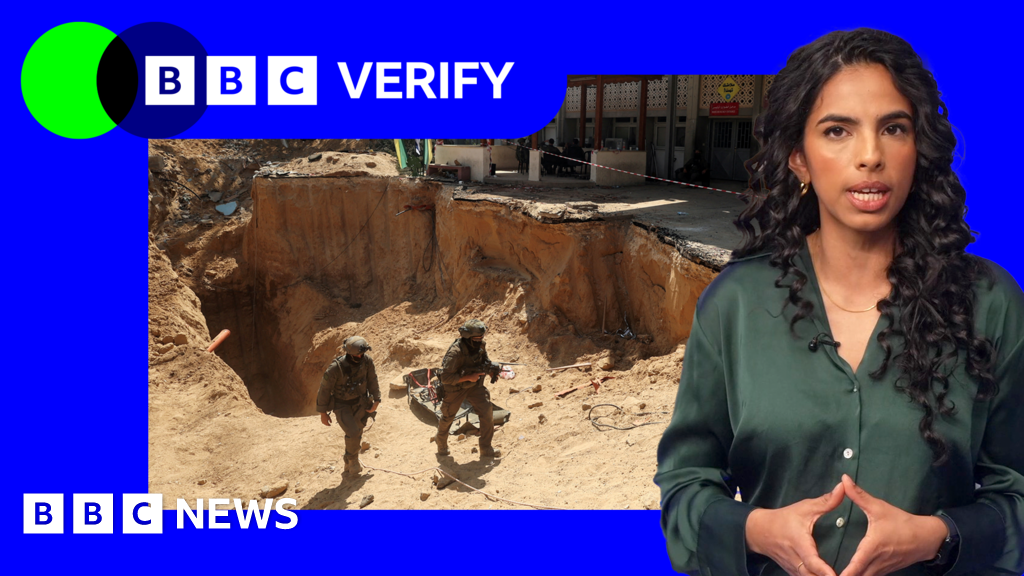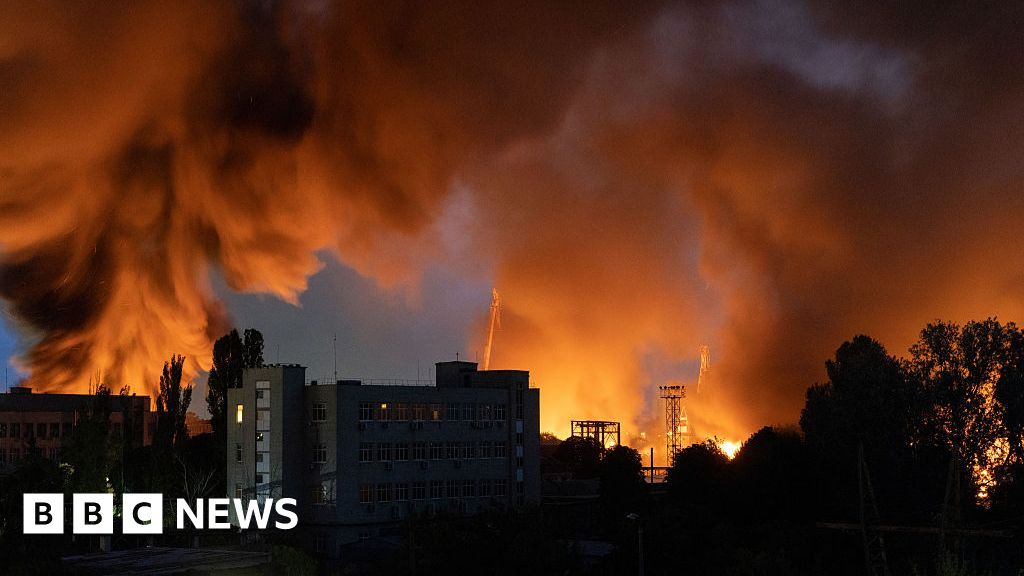China is arming its space station with ‘guard dogs.’ They have good reason for it

China is developing robotic guards for its Tiangong space station. Equipped with small thrusters, these AI-powered robotic beasts are being developed to intercept and physically shove suspicious objects away from its orbital outpost. It’s a deceptively simple but ingenious step towards active space defense in an increasingly militarized domain. Rather than firing directed energy weapons like lasers or projectiles, which will turn the potential invader into a cloud of deadly shrapnel flying at 21 times the speed of sound, the Chinese have thought of a very zen “reed that bends in the wind” kind of approach. The bots will grapple a threatening object and lightly push it out of harm’s way. Elegant space jiu-jitsu rather than brute kickboxing.
The announcement, made by scientist Sun Zhibin of China’s National Space Science Centre during a recent talk at Nanjing University of Science and Technology, comes as recent Pentagon reports reveal that China has already staged the first-ever satellite combat operations in low-Earth orbit. It marks a decisive shift from passive space exploration and coexistence to active territorial control at orbital altitudes.
Beijing indicates that it is not “arming” its space station out of aggression, but as a response to recent threats by a Starlink satellite, which grazed the Tiangong, prompting evasive maneuvers and strong formal protest in the UN by the Chinese delegation. However, it would be naive not to see it as part of the ongoing effort to dominate space by force, which is now ongoing in Russia, the United States, and China.
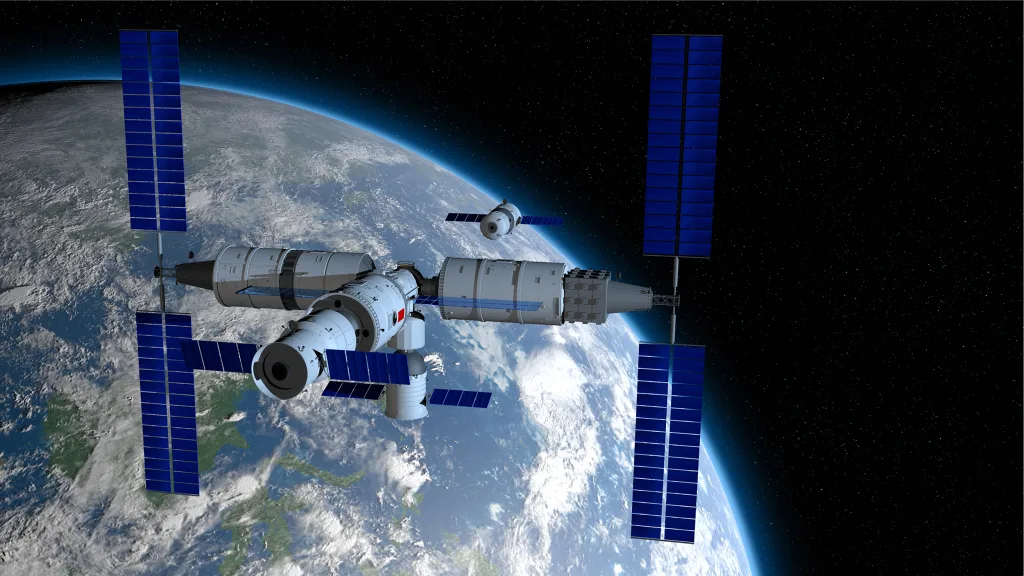
A logical design
China’s solution is actually the only possible design that makes sense. On Earth, when you destroy an aerial object, it falls to the ground, where it stays forever thanks to gravity. But firing a projectile at an object approaching a space station wouldn’t end a threat—it would unleash chaos.
Imagine this: A bullet, no larger than your fist, streaks toward an incoming satellite. They collide not with a Hollywood explosion, but a silent, hyper-violent shattering. At orbital speeds—10 times faster than a rifle round—the impact vaporizes metal, scattering a storm of razor-edged fragments in all directions. Each shard, now a new projectile, inherits the object’s original velocity. Some scream toward the void; others carve lethal arcs back toward the station, peppering its hull like cosmic shotgun pellets.
This isn’t just debris. It’s a permanent minefield that doesn’t go away. Those fragments don’t slow down. They don’t fall. They loop around Earth for decades, crossing orbits like invisible shrapnel. One piece tears through a solar panel, crippling a satellite. Another punches into a fuel tank, triggering a secondary explosion. The cascade begins: each new collision spawns more debris, more weapons. Low-Earth orbit—once a highway of discovery—becomes a junkyard of spinning blades, making space travel impossible for centuries to come. This doomsday scenario is what it’s technically known as the Kessler effect, which was formulated in 1978 by NASA scientists Donald J. Kessler and Burton G. Cour-Palais.
Firing a laser—or any other form of directed energy beam—wouldn’t stop the incoming object either (to be strictly correct, it would eventually, as light exerts a force on objects, but it would take years, so it’s not useful for this defense scenario).
Sun’s proposal, however, would theoretically work perfectly. First, it’s not only about space robots. It outlines a tiered response protocol that transforms space station defense from reactive to proactive operations. When sensors and ground control detect an approaching object, the system initiates a comprehensive intent assessment phase, analyzing the intruder’s trajectory, velocity changes, and behavioral patterns to determine whether the approach represents deliberate reconnaissance, accidental drift, or potential collision threat. The assessment feeds into a decision matrix that weighs multiple response options, ranging from subtle evasive maneuvers and orbital adjustments to the deployment of what Sun describes as specialized robotic thrusters—something I’m calling “space guard dogs.”
These bots are the most cinematic capability of the defense, involving physical interception. You can think about these space guard dogs as autonomous directional thrusters like the ones that Apollo astronauts used to maneuver the Apollo Command Module or the Lunar Module. The engineers have not presented the design for these bots yet, but they describe small thrusters equipped with sensors, a docking mechanism, and artificial intelligence. After launching from the Tiangong and intercepting the suspicious object, the bot’s docking mechanism—most likely a grapple—will latch onto the intruders. Once securely attached, the thrusters will fire in a controlled propulsion burn to push targets into safer trajectories, like a tugboat in a port, effectively creating a moveable exclusion zone around China’s premier space asset.
“Sometimes another spacecraft may deliberately come close—maybe just to take a look—but it can still interfere with our operations,” Sun explained during his presentation, acknowledging that even ostensibly peaceful approaches can disrupt critical station operations.
The strategic rationale of the system is rooted in past incidents that have highlighted the vulnerabilities of orbital assets. In December 2021, China formally reported to the United Nations that its Tiangong space station was forced to perform two evasive maneuvers in the same year to avoid potential collisions with SpaceX’s Starlink satellites. Starlink-1095 and Starlink-2305 reportedly descended from their typical operational orbits of around 555 kilometers into Tiangong’s zone at approximately 382 kilometers, prompting emergency actions on July 1 and October 21, 2021.
The encounters were observed by Harvard astronomer Jonathan McDowell using U.S. space tracking data, estimating that the Starlink satellite in the October incident might have come within a mere 1.8 miles of the Tiangong station. In space distances, this is the equivalent of two cars coming within fractions of an inch from a crash. The near-misses occurred while astronauts were aboard the station, “endangering the life or health of astronauts” according to Beijing. China stressed that states are responsible for all national space activities, including those conducted by commercial operators.
The Chinese complaint to the UN highlighted the difficulty in predicting the Starlink satellites’ trajectories due to their continuous maneuvering, with their strategies largely unknown and orbital errors hard to assess, thus posing a collision risk. For the July 2021 encounter, there was no advance communication between SpaceX and the China Human Spaceflight Engineering Office (CMSEO) about the pass. SpaceX, for its part, confirmed that it checks for close approaches with both the International Space Station and China’s Space Station.
The United States stated in response that these activities did not meet the threshold for established emergency collision criteria, and therefore, emergency notifications were not warranted. China disagreed, and the International Space Station—managed by the United States, Russia, and Europe—would have probably executed the same maneuver, according to past operational history.
This divergence in perspectives underscores a critical gap in international norms and communication protocols for space operations. The absence of clear, mutually agreed-upon rules for collision avoidance and maneuver notification between major spacefaring entities fosters an environment ripe for misinterpretation, accidental collisions, and escalating tensions, directly fueling the perceived need for “space guard dog” capabilities and contributing to a more contested space domain. This is even more important when you take into consideration how all these global powers are actively putting weapons in space and training for space war contravening the Outer Space Treaty of 1967, the document that established international space law and prohibited placing nuclear weapons or other weapons of mass destruction in orbit, on celestial bodies, or in outer space.
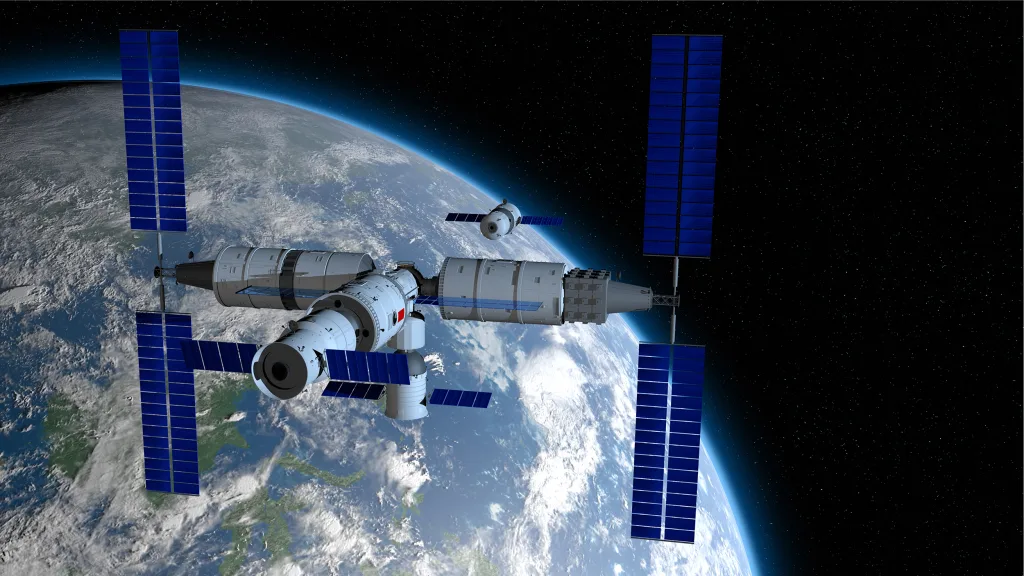
Advantage China
China’s protests in the UN are ironic given that China’s ambitions in space extend far beyond its defensive robots. The country is quickly expanding military space operations, building capabilities that are reshaping the global space landscape. It founded its space force in 2024, declaring orbital operations the most crucial domain for the country’s defense. This is nothing that the United States and Russia haven’t been doing for decades. The Pentagon also has its own space force arm—founded by Trump in his first term—and has recently suggested to accelerate the country’s efforts in response to China’s latest developments.
One of the most concerning developments for the U.S. is China’s demonstrated prowess in rendezvous and proximity operations (RPO), precise spacecraft maneuvers to approach and closely operate near another object satellite. These involve controlled relative motion for activities like inspection, maintenance, docking, or capture. They can be peaceful—like filling the fuel tank of a satellite—or military, like taking down another spaceship. U.S. Space Force officials have likened China’s maneuvers to “dogfighting in space,” a term that evokes Star Wars space battles but that actually occurs in a much different way, with long trajectories that take a long time to complete and none of that Luke versus Vader tit-for-tat. Vice Chief of Space Operations Gen. Michael A. Guetlein stated in March 2025 that China has been using experimental satellites to practice these dogfights, an event that has beaten the Pentagon’s own plans to do the same.
The test involved a series of “proximity operations” conducted in low-Earth orbit last year, involving “five different objects in space maneuvering in and out and around each other in synchronicity, and in control.” There were three Shiyan-24C experimental satellites—think about these as the attackers—and two Shijian-6 05A/B experimental space objects—the targets—which came within less than roughly half a mile of each other. These operations are not just technical demonstrations; they are seen as “practicing tactics, techniques, and procedures to do on-orbit space operations from one satellite to another,” the Space Force says, hinting at potential hostile intentions.
It is not the first time China has done it, too. The Shijian (meaning “Practice” in Chinese) series of satellites has long been a focal point of concern for U.S. government and space observers due to their unannounced launches, deployment of undisclosed sub-satellites, and unusual orbital maneuvers. It has demonstrated RPO capabilities, including close inspection and even towing of other objects. The Shijian-17, launched in 2016, was equipped with a robotic arm. U.S. Space Command Commander General James H. Dickinson publicly warned in April 2021 that this robotic arm could be used in a “future system for grappling other satellites,” highlighting its potential for “counter space capabilities.” Which brings us back full circle to that idea of the space guard dogs and why Sun believes they need them.
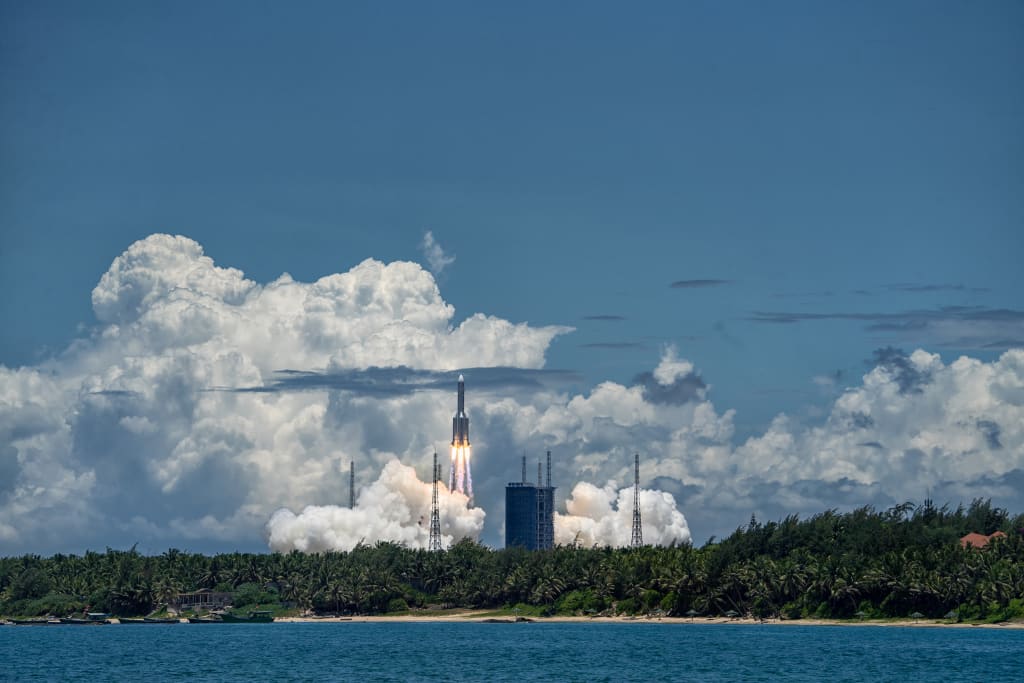
The militarization of space
There have been previous military operations in space—most notably, the U.S. conducted several nuclear tests in space, like Starfish Prime in 1962, a 1.4 megaton bomb detonated at a high altitude over Johnston Atoll, an island in the Pacific Ocean, aimed to study the effects of EMP (Electromagnetic Pulse) on electronics and satellites. But things are getting really heated now.
The U.S. Space Force is playing catch up with Chinese capabilities. The U.S. Defense Advanced Research Projects Agency (DARPA) and the U.S. Space Force’s Space Systems Command (SSC) are spearheading initiatives like the Victus Haze mission, which has already been delayed from mid-2025 to a late 2025 launch. Using only two spaceships, it aims to partially match the capabilities demonstrated by the Chinese.
More importantly, however, is President Trump’s Golden Dome, an ambitious $175 billion plan to build a coast-to-coast missile defense shield over the U.S. that envisions hundreds or even thousands of satellites in orbit, equipped with advanced sensors and interceptors, including space-based lasers, that are designed to detect, track, and neutralize incoming hypersonic, ballistic, and space-based weapons. Critics warn that such a system, aspiring to make the U.S. invulnerable, could be perceived by adversaries as an attempt to undermine nuclear deterrence, thereby fueling a dangerous global arms race. Indeed, China is already developing counter-stealth materials designed to evade Golden Dome’s detection capabilities.
Russia has been developing orbital anti-satellite (ASAT) weapons for years. U.S. officials have confirmed that Moscow is developing a nuclear weapon designed to target satellites, capable of producing a powerful electromagnetic pulse (EMP) upon detonation that could indiscriminately disable hundreds of government and commercial satellites in low Earth orbit. This threat is particularly concerning given the critical reliance of modern society on satellite infrastructure. The Pentagon further stated that Russia launched an anti-satellite vehicle into orbit in May 2024, placing it in the same orbit as a U.S. government satellite, and that the Kosmos-2553 spacecraft, launched in February 2022, contained components of Russia’s anti-satellite nuclear weapons system.
China has clearly stated that they consider orbital space domination crucial to have military superiority on Earth. They have declared they want technological hegemony in hypersonic space weapons and so far they have achieved it, according to the Pentagon itself, which referred to its tests as “close to Sputnik moment” back in 2021. William Schneider—a senior member of the Hudson Institute think tank—wrote in 2022 that China’s new space hypersonic force is a “system of systems” designed to beat the U.S.’s early warning capabilities, which detect any nuclear launches in the world. The Chinese People’s Liberation Army doesn’t try to hide its fight for orbital domination, as American Enterprise Institute’s analyst Larry Wortzel highlighted as far back as 2007: “In a China Military Science article, Major General Liu Jixian of the PLA Academy of Military Science paraphrases Kennedy this way: ‘Whoever controls the universe controls our world; whoever controls space controls initiative in war.’” Now we are seeing the results of this vision.
Of course, the U.S. thinks the same, as chief of space operations for the U.S. Space Force said in March at the Air & Space Forces Association’s Warfare Conference in Aurora, Colorado: “We must think of space as a warfighting domain, rather than just a collection of support activities.” His thoughts are a summary of the new official Pentagon doctrine for military space operations—Space Force Doctrine Document 1, published back in April.
These developments, coupled with the deterioration of existing arms control frameworks like the New START Treaty—set to expire in February 2026 with no successor—and the suspension of U.S.-China arms control talks—back July 2024 over US arms sales to Taiwan—paint a grim picture of a space environment increasingly devoid of guardrails. A vacuum of agreed-upon norms and limitations creates a dangerous free-for-all, where each nation’s perceived need for security drives a continuous cycle of innovation and counter-innovation, pushing towards an orbital arms race and bypassing or ignoring the Outer Space Treaty.
Aside from Russia’s alleged new nuclear satellite, spaceships like the ones used in Victus Haze or Tiangong’s defensive robots operate within a legal gray area that exploits ambiguities in the 1967 Outer Space Treaty, which prohibits placing weapons of mass destruction in space, but doesn’t say anything about conventional defensive systems. By framing the robots as nondestructive “tugboats” rather than weapons, China maintains plausible deniability while establishing operational precedents that could normalize active space defense measures.
But, as we know, RPO capabilities have offensive applications too: The same robotic systems capable of pushing away threats could theoretically capture or disable hostile satellites through controlled manipulation. Sun’s acknowledgment that satellites sometimes approach “deliberately” to “take a look” reflects growing concerns about orbital espionage, where nations deploy satellites for close-range intelligence gathering against foreign space assets.
The development signals that space warfare has moved beyond theoretical planning into operational reality, with the three top world powers now fielding systems capable of engaging hostile targets across the orbital domain. In this emerging environment, the line between defensive maneuvering and offensive action becomes increasingly blurred. And with it, the risk of actual space war—which could signal the start of a nuclear war on the ground—becomes clearer by the day.
What's Your Reaction?
 Like
0
Like
0
 Dislike
0
Dislike
0
 Love
0
Love
0
 Funny
0
Funny
0
 Angry
0
Angry
0
 Sad
0
Sad
0
 Wow
0
Wow
0





